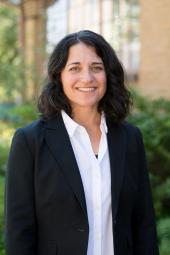Mining engineering course recognized by UN Sustainable Development Solutions Network
Faculty at Mines, Virginia Tech, National University of Colombia co-teach Sustainable Development and Earth Resources
A graduate-level course co-taught by faculty at Colorado School of Mines, Virginia Tech and the National University of Colombia in Medellin has been recognized by the United Nations’ Sustainable Development Solutions Network (SDSN).
The class, which focuses on sustainable development and earth resources, was selected by SDSN as a case study for integrating the UN Sustainable Development Goals (SDGs) into resource engineering education as part of its “Accelerating Education for the SDGs in Universities” guide.
Adopted by all UN member states in 2015, the 17 SDGs are a global call to action to create a more sustainable and equitable future for all, addressing poverty, inequality, climate change, environmental degradation, peace and justice and more.

“The extractive industries were especially called on to make greater contributions toward meeting the SDGs when they were drafted. These industries can play a critical role in contributing to sustainable development in and around the communities where they operate,” said Nicole Smith, assistant professor of mining engineering at Mines.
Smith, a cultural anthropologist, co-teaches the class (MNGN567 at Mines) with Oscar Jaime Restrepo-Baena, professor of mining and metallurgical engineering at Universidad Nacional de Colombia in Medellin, and Emily Sarver, associate professor in the Department of Mining and Minerals Engineering at Virginia Tech, whose expertise is at the intersection of mining and the environment.
The weekly shared meeting time, held via videoconferencing, is used for guided discussion and activities based on independent reading and research assignments, along with occasional guest lectures from experts around the world. Students also collaborate in cross-university groups on a team project inspired by the SDGs.
“The course digs deep into the global demands for natural resources that underpin most all human endeavors, and the demands for more benign production,” the case study explains. “We challenge students to contend with the real conflicts posed by these competing demands. We inspire them to imagine and propose new solutions, whereby responsible resource development practices can contribute in net positive ways toward the economic, environmental and societal domains inherent to the UN’s SDGs.”
Topics include what sustainable development is, how it relates to natural resource development, how companies report on environmental and social governance topics, as well as corporate social responsibility and social license to operate and how those concepts are related to sustainable development.
Smith has been involved in the course’s instruction since Mines joined the international collaboration in 2018.
The course was first established in 2009 by Dr. Dirk van Zyl at University of British Columbia, who co-offered the class along with a colleague at the University of Pittsburgh. The next year, the course expanded to include Virginia Tech, and in 2016, the National University of Colombia took UBC’s spot in the collaboration. Since 2018, Virginia Tech, National University of Colombia and Mines have been the three course locations.
“We have three groups of students from three different regions, sometimes three different time zones and three professors who also bring in different perspectives from their disciplines. The students work together across institutions in group projects,” Smith said. “It's an incredible way for students to engage with others from different cultures and geographies and across languages. It's been an inspiring experience for both the professors and the students.”
This fall, Emilio Castillo PhD ‘20, who took the class with Smith during his time at Mines, also joined the interdisciplinary teaching group, from his new posting at the University of Chile in Santiago, where he is an assistant professor of mineral economics in the Mining Engineering Department.
With Castillo’s expertise in critical minerals, the course has also brought in a focus this semester on how the need for critical minerals for the energy transition will present both opportunities and challenges to contribute to sustainable development.
“By having professors from different disciplines lecturing and teaching and discussing the same topic, it emphasizes the interdisciplinary nature of natural resources engineering,” Smith said. “That's the present and the future of NRD – that holistic approach is becoming part and parcel of the field.”
And since they were already using technology to connect three separate classrooms on two continents, the instructors were able to easily make the switch to Zoom and remote instruction due to the pandemic. If anything, Smith said, Zoom made the cross-university collaboration even better, with the breakout room functionality allowing students across institutions to discuss during class time.
This semester, the class is being offered in a hybrid format at Mines, with in-person classroom time and Zoom.
“A lot of our students will go into the mining industry or petroleum industry or other industries that are global. In the workplace, they are going to be engaging with and interacting with people from different backgrounds. There are going to be language and cultural barriers,” Smith said. “This course gives them experience and skills that they can take into the workforce.”
“Everyone brings in such a different perspective. The diversity in students and faculty enriches the discussion, and it’s so possible now with the prevalence of Zoom.”




